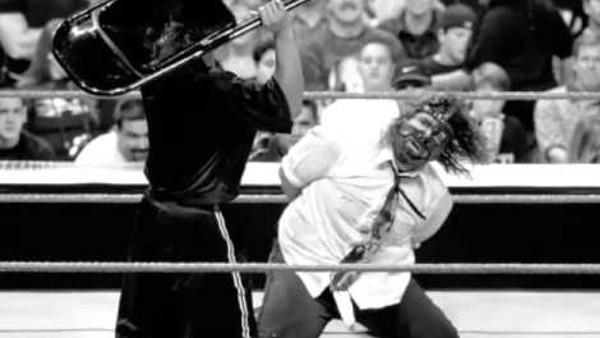10 Reasons Wrestling Will Never Ever Top The 90s
Yetis can never be mummies again.

Somewhere, beyond the depths of scripted promos, 50/50 booking and endless, endless repetition, there is much to love about pro wrestling in 2017.
Even if their character arcs are variously tedious and non-existent, WWE's current roster is loaded with eclectic and gifted talent. In a sense, it doesn't matter that Dolph Ziggler compared Shinsuke Nakamura to Michael Jackson a few weeks back, and that Nakamura was somehow told to respond through his mouthguard. Their match at Backlash is going to be sensational even if WWE has contrived to lessen expectations for it.
Many of those talents are doing career-best work. Neville's King of the Cruiserweights bit has stuttered - cheap, intentional disqualifications will do that - but his matches, in which he will only take to the skies if taken to the limit, have been uniformly great. The creative writers receive much stick, and with much justification, but whomever is penning Alexa Bliss' promos deserves much praise. She might use her own initiative to shut down the "What?" chants, but she generates them with some not half bad penmanship.
Modern wrestling can be great - but it was unmissable in the unrecoverable glory years of the 1990s, when wrestling was a meritocracy, a blank canvas, and ultimately, a place that actually made sense...
10. Violence Both Grisly And Spectacular

The level of violence seen in the 1990s will not - and should not - be repeated.
At the time, watching The Rock damn near decapitate Mankind with those sick chair shots to the back of the head at Royal Rumble 1999 was mesmerising. The method of generating sympathy was ghoulish - but undeniably effective. The Rock was instantly legitimised as a serious main event threat with that vile shortcut, but the long-term ramifications of Chronic Traumatic Encephalopathy (CTE) mean we'll never see its like again.
Mick Foley's Japanese counterpart was Kenta Kobashi, in that he used real violence to get himself over. Kobashi popularised the widespread use of the neck-first suplex trope in order to convey to his public that he would survive the most grisly punishment in the name of their entertainment and investment. By 1999, chair shots to the skull were as common as the worked punch in the WWF, and some would argue that the carefully orchestrated All Japan main event scene had degenerated into a stomach-churning parade of head-first finishers.
The sad case of Katsuyori Shibata - who will never wrestle again after suffering a subdural haematoma upon drilling Kazuchika Okada with a full-on headbutt last month - is, at least, an aberration.
That this level of ultra-violence has been abandoned can only be considered a good thing - but to refuse to believe something has been lost is a false narrative.